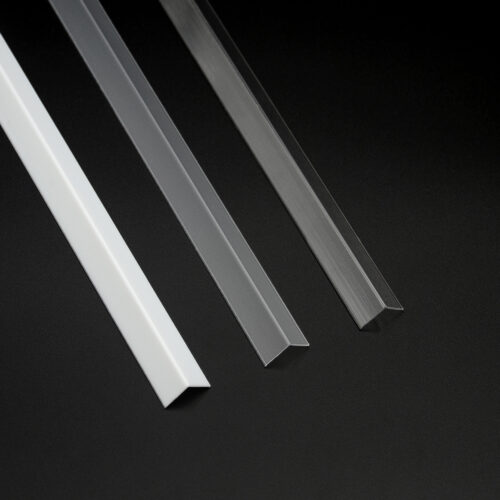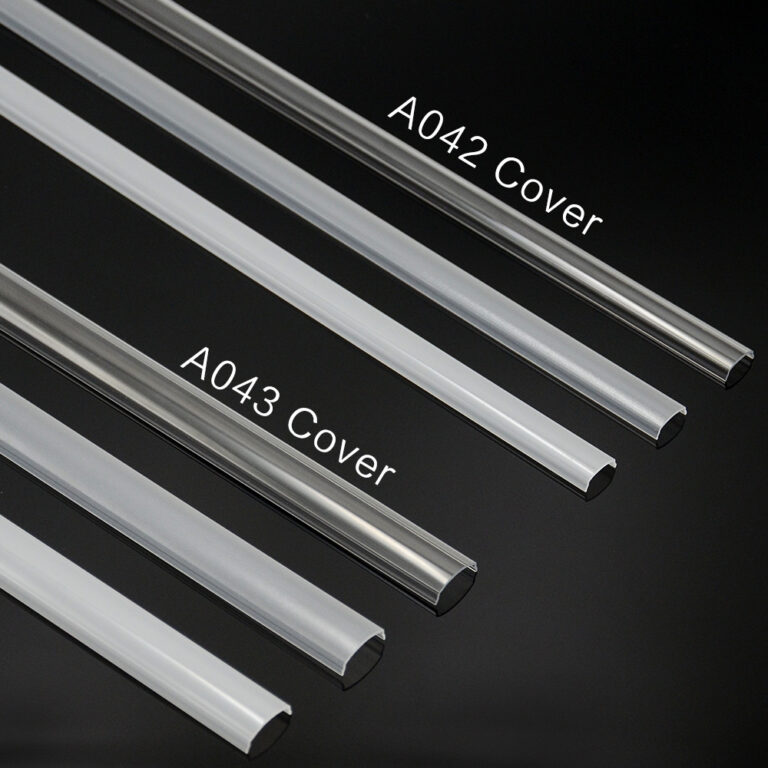Remarque : Afin de garantir l'exactitude des informations, cet article suit le processus de création et de révision du contenu de l'équipe d'experts Helian.
Les lampes LED ont-elles besoin d'un diffuseur ?
La réponse courte est oui, et voici pourquoi. Les LED (diodes électroluminescentes) émettent des faisceaux lumineux très directionnels. Bien que cette luminosité soit un avantage, les LED agissent comme des sources ponctuelles, ce qui crée souvent un éblouissement important. Au fil du temps, cet éblouissement peut entraîner une fatigue visuelle, ce qui les rend inconfortables pour une utilisation quotidienne (par exemple, pour l'éclairage de la maison, les luminaires de bureau ou les présentoirs des magasins).
C'est là qu'intervient un diffuseur à LED : un composant spécialisé (généralement une coque blanche ou translucide) qui convertit la lumière ponctuelle dure en un éclairage doux et diffus. La plupart des diffuseurs de LED sont fabriqués à partir de plastiques durables tels que le PC (polycarbonate), le PMMA (acrylique) ou le PS (polystyrène), des matériaux choisis pour leur capacité à équilibrer la diffusion de la lumière et la longévité.
Quel est le principe de la diffusion de la lumière ?
En ajoutant des diffuseurs de lumière aux substrats plastiques transparents, l'opacité du matériau est augmentée, ce qui donne un effet translucide mais non éblouissant. Ce plastique modifié est connu sous le nom de matériau diffuseur de lumière. Les diffuseurs de lumière se répartissent en deux catégories principales : les diffuseurs inorganiques et les diffuseurs organiques.
Agents inorganiques diffusant la lumière
Le sulfate de baryum et la silice en sont des exemples. Lorsqu'elles sont mélangées à un substrat en plastique (comme le PC), ces minuscules particules obligent la lumière à se courber et à se réfracter un nombre incalculable de fois lorsqu'elle passe à travers. La lumière est ainsi diffusée uniformément, ce qui élimine les points chauds. Toutefois, les agents inorganiques sont naturellement opaques et peuvent donc réduire légèrement la transmission globale de la lumière (un petit compromis pour l'uniformité).
Agents organiques diffusant la lumière
Également appelées diffuseurs organiques nano-microbilles, ces particules transparentes sont conçues pour fonctionner avec l'indice de réfraction du substrat en plastique (la vitesse à laquelle la lumière traverse le matériau). Comme les microbilles et le substrat ont des indices de réfraction différents, la lumière est courbée plusieurs fois lorsqu'elle se déplace, ce qui crée une lumière douce et diffuse sans sacrifier la luminosité. Les agents organiques sont donc idéaux pour les applications où le rendement lumineux maximal est important, comme les installations de diffuseurs de lumière à DEL pour l'éclairage d'appoint ou les systèmes de diffuseurs de bandes à DEL pour les accents sous l'armoire.
Avantages de l'utilisation de diffuseurs de lumière à LED
Pour de nombreuses applications LED, les diffuseurs à base de PC (connus sous le nom de PC diffuseurs de lumière) sont la référence, grâce à leurs propriétés qui répondent aux besoins du monde réel :
- Diffusion supérieure de la lumière
Il diffuse la lumière uniformément, minimisant les reflets et les réfractions pour éviter l'éblouissement. Les fabricants peuvent personnaliser la transmission de la lumière (quantité de lumière qui passe à travers) et le trouble (aspect "givré") pour répondre à des besoins spécifiques, qu'il s'agisse de couvercles de diffuseurs opaques pour les luminaires linéaires ou d'abat-jour semi-transparents pour l'éclairage d'ambiance. - Haute transmission de la lumière
Contrairement aux matériaux moins chers, le PC diffuseur de lumière préserve la majeure partie de la luminosité de la LED. Cela signifie que vous obtenez une lumière douce sans la gradation du luminaire, indispensable dans les espaces comme les cuisines ou les bureaux où la visibilité est importante. - Résistance aux intempéries
Il résiste aux intempéries, aux facteurs environnementaux tels que les rayons UV, les températures élevées et l'humidité, afin de maintenir une stabilité à long terme en termes d'apparence et de performance. - Retardateur de flamme
Des versions ignifuges personnalisées sont disponibles pour les applications critiques en matière de sécurité, telles que les couvercles d'éclairage d'urgence ou les luminaires à LED dans les bâtiments commerciaux.
La polyvalence du PC diffuseur de lumière s'étend également à son potentiel de conception. Il est facile à mouler dans des formes complexes par injection, de sorte que les fabricants peuvent tout créer, des profils de diffuseurs de canaux à leds incurvés pour les lumières linéaires modernes aux panneaux élégants de diffuseurs de lumière à leds pour les écrans numériques. Cette flexibilité permet aux concepteurs d'équilibrer la fonctionnalité (pas d'éblouissement) et l'esthétique (aspect propre et moderne), ce qui renforce l'attrait d'un produit. De plus, sa résistance aux températures élevées garantit un fonctionnement fiable à long terme, même dans les luminaires qui fonctionnent pendant des heures (comme les lampes d'étalage des magasins ou les panneaux de plafond des bureaux).
Applications courantes des diffuseurs à diodes électroluminescentes

- Abat-jour et tubes lumineux à LED
- Systèmes de diffuseurs à bandes LED pour l'éclairage sous l'armoire, l'éclairage d'angle ou l'éclairage d'accentuation
- Couvercles de diffuseurs de canaux à LED pour les luminaires linéaires à LED (par exemple, les luminaires sur rail ou les appliques murales)
- Panneaux d'affichage électroniques et tubes numériques
- Panneaux publicitaires en caisson lumineux et enseignes lumineuses
- Rétro-éclairage de l'écran LCD
- Flacons d'emballage de produits cosmétiques (où la lumière diffuse met en valeur les couleurs du produit)
En bref, un diffuseur de LED n'est pas un simple ajout, c'est une nécessité pour rendre les LED utilisables, confortables et efficaces. Que vous installiez un diffuseur de bande LED sous les armoires de cuisine ou un diffuseur de canal LED pour les luminaires linéaires commerciaux, un diffuseur de qualité vous permet de conserver l'efficacité énergétique et la longue durée de vie des LED, sans éblouissement brutal.

